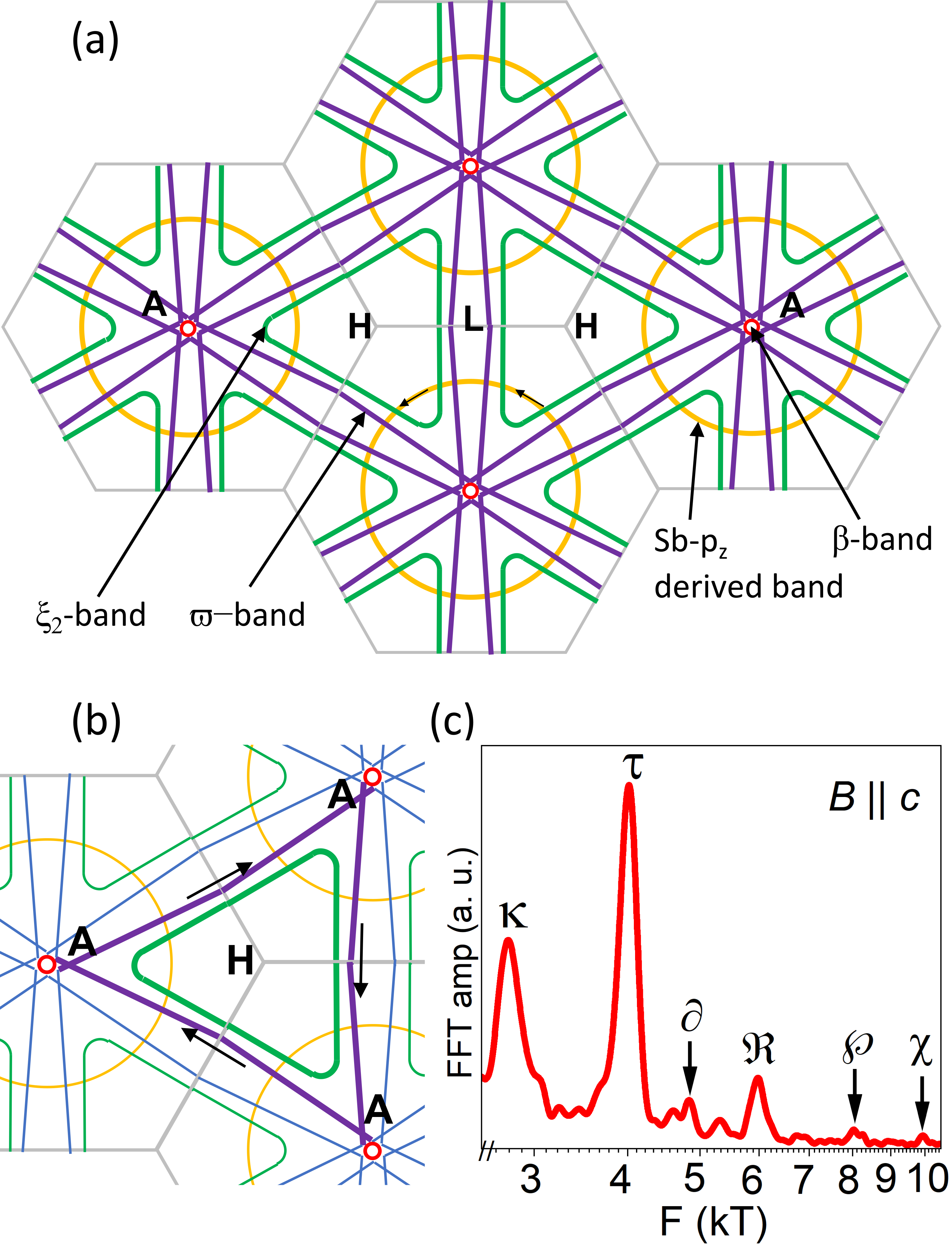Ramakanta Chapai, J. F. Mitchell and Ulrich Welp, Argonne National Laboratory, Vincent Oliviero, Maxime Leroux, LNCMI Toulouse.
The recently discovered-kagome lattice compounds AV3Sb5 (A = K, Rb, Cs) show a fascinating interplay of superconductivity, charge density wave (CDW) order, and nontrivial topology of the electronic band structure. The CDW order itself is unconventional due to the presence of chiral charge order and time-reversal symmetry breaking inducing a large anomalous Hall effect and non-reciprocal transport. The transition into the CDW state is accompanied by an extensive reconstruction of the Fermi surface. While angle-resolved photoemission spectroscopy (ARPES) has been invaluable in exploring the electronic structure, effects due to matrix elements have largely precluded the visualization of the reconstructed band structure. In contrast, quantum oscillations are a direct manifestation of the Fermi surface and can reveal information on the quasiparticle effective masses, their lifetimes, and their topological state. Now, a research collaboration between Argonne National Laboratory, Hofstra University, and LNCMI-Toulouse has performed quantum-oscillation measurements on high-quality single crystals of CsV3Sb5 using the tunnel diode oscillator technique in fields up to 86 T. The high-field data reveal a sequence of magnetic-breakdown orbits that allow us to construct a model for the folded Fermi surface of CsV3Sb5, shown in Figure 1a. The dominant features are large triangular Fermi-surface sheets that cover almost half of the folded Brillouin zone highlighted in Figure 1b in magenta (ϖ band with a frequency of 1943 T) and green (ξ2 band at 804 T). These orbits form the ‘building blocks’ that combine one-by-one to form a series of pproximately equally spaced frequencies that dominate the high-field oscillation spectrum as shown in Figure 1c. Notably, these Fermi-surface sheets have not yet been detected in ARPES. In addition to mapping this folded Fermi surface, we have extracted the Berry phases of the electron orbits from Landau-level fan diagrams near the quantum limit without the need for extrapolations, thereby unambiguously establishing the non-trivial topological character of several electron bands in this kagome-lattice superconductor.

Figure 1: (a) Schematic of the 2×2 reconstructed Fermi surface of CsV3Sb5 for kz = ±π/c in repeated zones. Capital letters refer to Brillouin zone points. (b) Enlarged schematic of the ξ2 and ϖ orbits. (c) High-frequency section of the oscillation spectrum at 1.5 K on a log field scale. The κ orbit corresponds to the sum of the ξ2 and ϖ orbits, while the τ orbit represents two basic triangular ϖ units. Correspondingly, ℜ, ℒ, and χ contain 3, 4, and 5 triangular building blocks, respectively. ∂ is the sum of the ξ2 and ϖ orbits.
Magnetic breakdown and topology in the Kagome superconductor CsV3Sb5 under high magnetic field, R. Chapai, M. Leroux, V. Oliviero, D. Vignolles, N. Bruyant, M. P. Smylie, D. Y. Chung, M. G. Kanatzidis, W.-K. Kwok, J. F. Mitchell, and U. Welp, Phys. Rev. Lett. 130, 126401 (2023).
https://journals.aps.org/prl/abstract/10.1103/PhysRevLett.130.126401
Contact: rchapai@anl.gov, maxime.leroux@lncmi.cnrs.fr,
mitchell@anl.gov, welp@anl.gov






